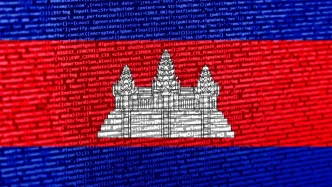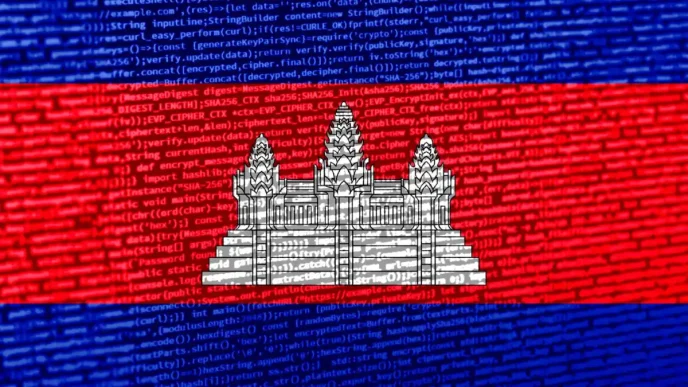In the quiet province of Hung Yen, a team from Save Vietnam’s Wildlife recently rescued a group of illegally trafficked pangolins, their fragile bodies bearing the scars of a brutal journey. This scene, captured by the Vietnam News Agency, is a stark reminder of the ongoing battle against wildlife trafficking in Vietnam, a country where thousands of animals are snatched from their natural habitats each year to feed a relentless black market.
For the dedicated staff at wildlife rescue centres across the nation, every rescue is a race against time. These centres, often operating with limited resources, have become sanctuaries for endangered species, offering a second chance at life. From pangolins to white-legged langurs and sun bears, the animals arriving at these facilities are frequently dehydrated, malnourished, and injured—victims of traps and inhumane handling. Yet, through tireless care, many are nursed back to health and released into the wild, a testament to the resilience of both the creatures and their human saviours.
A Round-the-Clock Commitment
Trương Ngọc Ánh, a veterinarian at Save Vietnam’s Wildlife, describes the gruelling nature of the work. “Just before Tết in 2023, we rescued six animals, including two pangolins. On the first day of the Lunar New Year, one pangolin couldn’t defecate, so I performed a procedure to help it. For many, this might seem like bad luck, but for us, saving an animal is the best fortune,” she told Voice of Vietnam. Her words reflect a deep-seated commitment shared by many in the field, where personal sacrifices are commonplace, and the reward lies in each life saved.
Similarly, Trần Văn Trường, another staff member at the centre, finds motivation in the moment of release. “After a long recovery process, seeing them return to nature feels like welcoming a new year,” he said. At the Endangered Primate Rescue Centre in Cúc Phương National Park, Đỗ Đăng Khoa recalls working through New Year’s Eve to save a white-legged langur, prioritising the animal’s urgent medical needs over festive celebrations. Months later, when the langur not only recovered but also reproduced, Khoa likened it to welcoming a new family member.
Rehabilitating animals, especially primates, is no small feat. Trần Ngọc Anh from the Phong Nha-Kẻ Bàng National Park Rescue Centre explains that many rescued primates lose their natural behaviours after captivity, requiring years of care to relearn essential skills like foraging and social interaction. Only when they can function as a cohesive group are they deemed ready for release.
Evolving Practices in Conservation
Vietnam’s approach to wildlife rescue has evolved significantly in recent years. In the past, confiscated animals were often released directly into the wild without proper health checks or quarantine, sometimes in areas outside their natural habitats. Such practices posed risks to both the released animals and local wildlife populations. Today, however, rescue efforts are more structured, benefiting from expert input and collaboration with international organisations, resulting in higher success rates for rehabilitation and release.
Harold Browning, a British animal behaviour expert who has volunteered in Vietnam for over a decade, praises the country’s progress. He highlights the Phong Nha-Kẻ Bàng National Park Rescue Centre as maintaining some of the highest standards for wildlife release globally. Reflecting on a four-year project to release hornbills, Browning describes it as a career highlight. He also expresses hope for a future where rescue centres are no longer needed, envisioning a world where illegal trafficking ceases, and animals remain in their natural habitats.
Browning is particularly struck by Vietnam’s biodiversity, describing its forests as “a miracle” compared to the heavily altered landscapes of many other nations. He finds encouragement in the growing involvement of young Vietnamese in conservation efforts. The Hanoi Wildlife Rescue Centre, for instance, has recently hired several young staff members eager to innovate and learn.
Raising Awareness Through New Platforms
Beyond the physical demands of rescue and rehabilitation, conservationists are increasingly turning to digital tools to spread their message. Tẩn Lổ Quẩy, a staff member at the rescue centre in Hoàng Liên National Park, braves freezing conditions at over 2,200 metres above sea level to conduct wildlife surveys. To amplify his impact, he has embraced social media, using his TikTok channel to share stories of rescued animals like Princess Bư, a sun bear who arrived at the centre as a malnourished cub. Under Quẩy’s care for over three years, Bư has thrived, and videos of her journey have inspired a new generation of conservationists.
Comments on Quẩy’s videos reflect the growing public interest in wildlife protection. “Your work is amazing. It’s taught me so much about wildlife conservation. We need to protect these animals for future generations,” wrote one TikTok user. Such engagement underscores the potential of social media to educate and mobilise communities in the fight against illegal wildlife trade.
Protecting Endangered Species is a Persistent Battle
Despite these efforts, the illegal wildlife trade remains a formidable challenge in Vietnam, driven by demand for exotic pets, traditional medicine, and luxury goods. Pangolins, often referred to as the world’s most trafficked mammal, are particularly vulnerable, their scales prized in some markets despite a lack of scientific evidence supporting medicinal claims. The dedication of Vietnam’s wildlife warriors offers a glimmer of hope, but systemic change—through stricter enforcement, public education, and international cooperation—is essential to dismantle the trafficking networks.
For now, each rescue is a small victory in a much larger war. As Vietnam continues to strengthen its conservation efforts, the stories of pangolins, langurs, and sun bears returning to the wild serve as powerful reminders of what is at stake. These animals, once on the brink of death, embody the resilience of nature and the unwavering spirit of those who fight to protect it, one life at a time.














